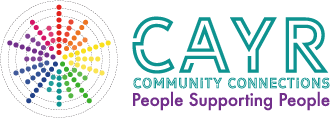 As the HIV Sector continues to work with community partners to respond to the COVID-19 public health emergency, WHAI is committed to supporting the integration of a gendered approach. Our hope is that the context and tips shared here will help to inform your work while aligning with WHAI’s community capacity building objectives.
As the HIV Sector continues to work with community partners to respond to the COVID-19 public health emergency, WHAI is committed to supporting the integration of a gendered approach. Our hope is that the context and tips shared here will help to inform your work while aligning with WHAI’s community capacity building objectives.
Context: Public health strategies aimed at preventing the spread of COVID-19, including physical distancing, frequent hand washing, and self-isolation, impact all of us, and in particular, the marginalized communities that we work with. As we continue to work with community stakeholders to integrate these strategies, it is important to also integrate strategies that address the existing social determinants of health that impact WHAI’s priority populations of women (women living with HIV, African, Caribbean and Black [ACB] women including newcomers, Indigenous women, Trans women, women who use substances, women who experience violence, and women who are or have been incarcerated). Below are some considerations that have arisen to date.
Increased Risk of Violence: Women living with or facing systemic risk for acquiring HIV face heightened rates of intimate partner violence1. As public health measures require people to isolate, relationship stresses can increase. Adding to this, we are seeing increased economic pressures and caregiving pressures, all of which can contribute to increased stress and relatedly, risk for increased violence. As social services are adjusted to reduce the risk of COVID-19 transmission, direct service access (i.e. violence against women services, shelters, support services, foodbanks, harm reduction services, sex work support services etc.) have become restricted, limiting access to violence against women support.
Homelessness: Women who are homeless often “crash” at people’s homes or “hook up” in order to have a safe place to sleep. With the requirement for physical distancing and self-isolation, we increasingly hear about the impact on women’s ability to find safe places to stay. In addition, we are hearing about women’s shelters that are unable to accept new intakes from women who may be experiencing violence, and some that are discharging women when they reach their maximum stay. These realities, combined with the safety risks of living outdoors, limited capacity to prevention practices such as hand washing, and stress related to this current public health emergency, pose increased risks to women’s safety and wellbeing.
Child Welfare Involvement: WHAI’s priority populations of women, and in particular ACB and Indigenous women and women living in poverty, are already disproportionately impacted by child welfare involvement. Public health measures to reduce risk for COVID-19 transmission may impact these services. In some communities, this has included the cancellation of supervised visits as well as services required to facilitate parent-child visits (i.e. counselling). These measures also create challenges for families in shared custody agreements who are managing self-isolation or quarantine.
Economic Insecurity: Many women, and in particular, WHAI’s priority populations of women, face economic instability2. In this current public health emergency, the combination of job loss, increased difficulties accessing services such as EI, ODSP, OW, Child Benefits and other economic subsidy programs; along with service limitations to food banks, meal programs and shelters – all contribute to increased economic pressures. In addition to WHAI’s priority populations of women, loss of income is a reality for many including sex workers, many migrant workers, panhandlers, and other non-unionized workers not covered by economic subsidy programs.
Sexual and Reproductive Health: Sexual and reproductive health is important for all women, and women’s access to these services may be impacted by the response to COVID-19. The obvious requirements for physical distancing create pressures to avoid direct sexual contact with people who do not live in the same home as you, and yet for others, it may create increased pressure to have sex with those in the same living space. Access to birth control may be limited as well as access to abortion care and STBBI testing. Conversely, for those who are pregnant, access to pre and post-natal care may be impacted by the response to COVID-19, and information regarding the transmission of COVID-19 in the context of pregnancy, delivery and infant feeding is still limited.
Caregiving Role: Women play a significant role in caregiving across Ontario within families and communities. As stated in the Ontario HIV Epidemiology and Surveillance initiative (OHESI) Women & HIV in Ontario Fact sheet, 73% of women living with HIV were caring for children, compared to 23% of men3. We also know that women are more likely to be working in health and social care jobs in the community, roles often on the front lines of this public health emergency. For example, women make up more than 90% of all nurses across Canada4. In light of COVID-19, pressures associated with these roles are heightened, especially when combined with economic hardship and reduced social support.
Access to Treatment: Women living with HIV may already face barriers to HIV treatment which can impact their viral load and health outcomes. This is especially true for women living in rural and remote regions, including Indigenous women. With COVID-19 public health measures, there may be further barriers to phone or online healthcare due to lack of communication technology, or reduced support-based services. Given that these services help to facilitate engagement in care, an inability to access them could result in less viral load suppression and diminished health.
Mental Health Support: Women living with HIV and women who face systemic risk for HIV acquisition face heightened rates of depression and mental health challenges5 and face ongoing stigma and discrimination6. During this public health crisis and with the aforementioned barriers, there may be increased isolation, stigma and mental health challenges with limited access to support, particularly for WHAI’s priority populations of women.
WHAI & Integrating a Gender-Inclusive Response: The above considerations are only a few of the realities that may impact women’s safety and well-being during this current public health emergency. While it may be difficult to respond and integrate meaningful strategies, we will continue to work together to build awareness and capacity for a gender-inclusive community response. To date, WHAI Coordinators across Ontario are doing some of the following to help:
- Coordinating virtual meetings with community partners to share service updates, identify service access points and gaps and strategize about how to address and integrate these gendered realities
- Creating lists of community services and programs accessible to WHAI’s priority populations of women and distributing these through street outreach, harm reduction kit distribution, foodbanks, community drop-off points and partner networks
- Supporting colleagues and partners to find new and innovative ways to deliver services with these populations of women while maintaining important public health measures, including moving social and health-based support services to phone and online supports where possible
- Organizing for community capacity building and community development initiatives in response to this current public health emergency through a gender-inclusive lens.
ASOs are uniquely posed to understand and respond to the complexities of epidemics and were created through a long history of resiliency. WHAI’s community capacity building and community development objective is an important component of this context. As we all work to respond to this rapidly changing reality, we will continue to work together to foster an intersectional approach, recognizing that structural factors such gender, race, economic stability, Indigeneity and other social determinants of health will affect how people are impacted by COVID-19. Collectively, we are committed to working together to engage in gender-inclusive, intersectional emergency planning
1 Women & HIV in Ontario, OHESI (2019) ohesi.ca/wp-content/uploads/2019/03/OHESI-WHAI-Fact-Sheet-Women-HIV-Ontario.pdf
2 The OHTN Cohort Study (OCS) www.ohtncohortstudy.ca
3 Women & HIV in Ontario, OHESI (2019) ohesi.ca/wp-content/uploads/2019/03/OHESI-WHAI-Fact-Sheet-Women-HIV-Ontario.pdf
4 Canadian Nursing Association (2020). cna-aiic.ca/en/nursing-practice/the-practice-of-nursing/health-human-resources/nursing-statistics
5 The OHTN Cohort Study (OCS). www.ohtncohortstudy.ca
6 Collective Action, Community Change: A Provincial Situational Analysis Report by WHAI (2017). whai.ca/resources
Written and created by the Women’s HIV/AIDS Initiative.





